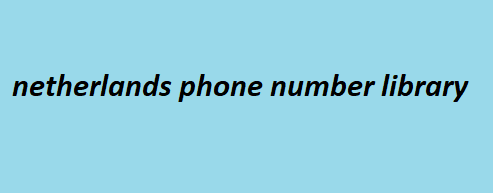Green IT: How to protect. The topics of climate protection and sustainability are becoming increasingly high on the agenda of many companies. No wonder: There is great public interest and consumers are now paying close attention to how their consumption affects climate change. The IT and communications landscape has a special role to play: the expansion of “Green IT” offers a lot of potential for reducing energy consumption. In this blog post, you will learn how you can conserve resources and work more efficiently at the same time with a modern cloud telephony solution.
This is how much CO2 emissions are caused by IT devices
Many people associate CO2 emissions with smoking industrial chimneys and car exhaust fumes. IT infrastructures in companies are rarely the focus of attention – even though several studies show that they. This means that IT systems produce about as much CO2 as international air traffic .
This proportion is constantly increasing due to increasing digitalization. The mining of ores such as cobalt, which is needed to produce the hardware, causes further ecological damage. More and more companies are therefore switching to green IT.
But what exactly is meant by this term?
What is meant by “Green IT”?
The term Green IT is easy to explain: It summarizes all measures that companies use to organize their IT infrastructure in the most resource-efficient way possible.
Since the 1990s, consumers have been able to recognize products from IT manufacturers that have been manufactured with particular attention to their ecological footprint by the .
How a sustainable IT infrastructure creates competitive advantages
A resource-efficient IT landscape already offers you numerous competitive advantages. The reasons why these will continue to increase in the future are obvious.
The topic of sustainability now plays a major role in public life – and awareness of the problem among the population has also increased :
- 87% of Austrians believe that the economy has a duty to take more measures to protect the climate.
- 89% of all Austrians are calling for a greater expansion of green electricity.
- 79% of Austrians support a tax system based on the polluter pays principle. In their opinion, climate-friendly behavior should become cheaper and climate-damaging behavior should become more expensive.
A sustainable IT infrastructure is also reflected in companies’ balance sheets. With its , the EU has decided that the continent should become climate neutral by 2050. In order to achieve this, CO2 emissions are increasingly being taxed .
A commitment to Green IT therefore brings companies several advantages:
- Green IT ensures a future-proof infrastructure and a sustainable, modern economy ,
- strengthens and improves public relations, and
- saves valuable resources and therefore money.
1. Use renewable energy sources
The ongoing operation of the IT landscape should be carried out using renewable energy. There are now many data centers that cover either the majority or even all of their electricity needs with solar or wind energy.
2. Rely on cloud technologies
Cloud computing has been on the rise for years: companies no longer run their solutions on their own servers, but access them via external data centers.
The market for cloud hosting services grew particularly strongly in 2020 in view of the Corona crisis and accompanying measures such as – and will continue to be in high demand in 2021 .
Cloud hosting offers many advantages for companies: They can react more flexibly to changing conditions and save not only costs but also energy. A prime example of the flexible use of cloud technologies is more on that in a moment.
3. Choose energy-efficient software
Software products are also crucial for a company’s energy balance. Solutions that are as lean as possible use as few resources as possible. In combination with cloud technology and sustainable data centers, this increases energy efficiency enormously.
4. Use suitable hardware
The selection of suitable hardware also determines the energy balance. There are now labels that guarantee that the hardware is produced in an environmentally friendly way. If companies buy such products and also pay attention to the durability of the hardware, they are reducing their ecological footprint.
5. Keep an eye on disposal
Disposal is also part of the hardware lifecycle. Dispose of your devices in such a way that they can be recycled as much as possible.
6. Become more flexible with virtualization
Another way to save energy is virtualization. This involves the abstraction of physical IT resources. What sounds a bit complicated at first is actually quite simple in practice.
Imagine that you need additional server capacity. With netherlands phone number library virtualization, you can add this via an external data center and control it via a virtual interface.
The simplest example of virtualization is cloud services in which you upload and save documents. The storage space is displayed to you virtually – even though it is not located in your own company, but is provided by an external data center.
In short: Virtualization makes it possible to use server capacities as efficiently and resource-efficiently as possible – exactly as your company needs it!
How cloud telephony solutions save energy and conserve resources
The is a prime example of Green IT! By using highly optimized systems for a large number of customers, the resources of a cloud telephony solution can be used optimally. This is how a cloud telephone system ensures an improved energy balance:
Graphics: yuutel
1. Optimal capacity utilization through centralization
The greatest strength of an in terms of energy efficiency: the infrastructure is shared by thousands of subscribers!
Cloud telephone systems are operated centrally in external data sending them Is the right choice centers: All clients share the computing power of the servers in the data center, thus ensuring optimal capacity utilization . If necessary, the resources can easily be expanded or reduced.
This solution makes it possible to always operate the most ecologically and economically sensible setup through flexible allocation of computing power, storage space, etc. The available resources are thus optimally utilized and energy consumption per participant is minimized!
For comparison: an average private branch exchange (PBX) that is operated locally is usually designed for 1,000 to 1,500 users. For companies with only 100 to 200 employees, such a solution is far too large and consumes unnecessary amounts of energy . With a cloud telephone system, however, you can set up exactly the right number of participants that you need!
Your advantage: You reduce your energy costs with the help of the cloud telephony solution because you do not have to operate an oversized, local PBX system
2. Energy-saving hardware reduces energy consumption
The energy consumption of a cloud telephony solution can be further minimized by using energy-saving IP telephone devices .
The following example illustrates how great this savings effect is:
A PoE class 3 phone typically requires 12 watts. Companies that operate 300 such devices consume 86.4 kWh.
This compares to energy-saving PoE class 1 phones: These canada data require a maximum of 3.8 watts, so 300 devices consume only 27.36 kWh per year.
What initially seems somewhat abstract can be illustrated concretely:
Calculated over the year, the additional consumption by PoE Class 3 devices corresponds to the total energy consumption of five Austrian households.
It is even more resource-efficient if you do not need additional hardware and use so-called soft clients instead of telephones . With such an application, VoIP calls can be made from any PC/MAC, laptop or smartphone. You can therefore use the devices you already have – this saves your wallet and the environment!

